15 Best Modern Sci-fi Novels to Read Now
The 32 best sci-fi books of 2022, 2023 and all-time
Upgrade is the mind-bending sci-fi thriller from Blake Crouch, author of the bestselling Dark Matter and Recursion.
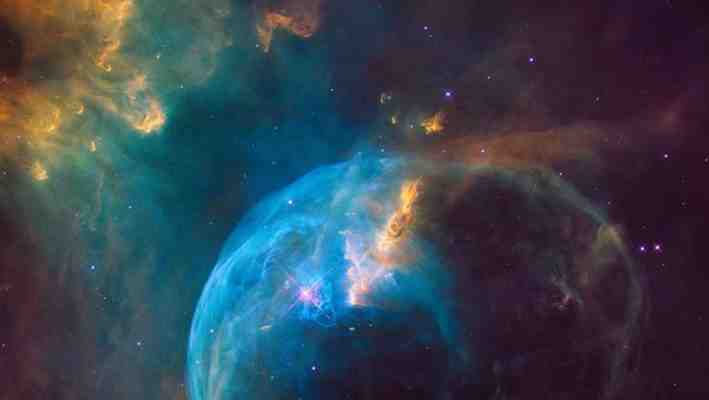
What if you were the next step in human evolution? If your concentration was better, if you could multitask quicker, read faster, memorize more? For Logan Ramsay, it’s happening. He knows that it’s not natural, that his genes have been hacked. He has been targeted for an upgrade, and with a terrifying plan in place to replicate his upgrade throughout the world’s population, he may be the only person capable of stopping what has already been set in motion.
The 28 Best Science Fiction Books of All Time (in 2023)
All products were independently selected by our editors and contributors. When you buy through links on our site, we may earn an affiliate commission.
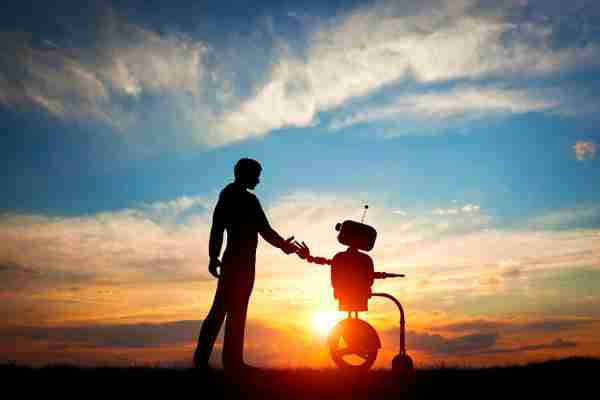
Although there were some earlier glimmers, Science Fiction (SF) began with the development of modern science in the industrial and scientific revolutions of the early 1800s. Many scholars credit Marty Shelley’s Frankenstein in 1818 to be the first true SF novel.
Thus, SF developed in parallel with scientific theories of the era, in celebration of human reason, and in opposition to more romantic, irrational stories. Of course, we’ve come a long way since then. English Professor Emeritus and SF author James Gunn said, “Science fiction is the literature of change.” SF enables us to extrapolate any aspects of our culture and to imagine and examine the human condition, in a rational way.
There are two major annual SF awards, the Hugo Award and the Nebula Award. Beginning in 1953, the Hugo Awards are given out for the best SF or fantasy works (of various lengths) of the previous year, as decided by the current members of the World Science Fiction Convention. Anyone can join the Convention and vote on the Hugos, so this is a very democratic award.
Since 1965, the Nebula Awards have been given out for the best SF works (of various lengths) of the calendar year, as decided by the members of the Science Fiction/Fantasy Writers of America (SFWA). SFWA requires authors to meet certain publication criteria for admission, so the Nebulas are awarded by fellow SF authors. Most of the SF novels on the list below have won one or both of these prestigious awards.
In addition, most of the novels below have had a significant impact on our culture and how we understand what it means to be human.
Brave New World is an iconic SF novel, which some consider to be one of the best English-language novels of the twentieth century. The story begins with a chilling tour of the Central London Hatching and Conditioning Centre, where five different castes of children are created in a factory setting.
Brave New World holds up surprisingly well with its reproductive technology, sleep-learning, and psychological manipulation.
The primary protagonist Bernard Marx is a psychologist with an inferiority complex, unhappy with his life in the rigid highly-structured society. This novel is considered one of the first dystopian novels, so, not surprisingly, things do not go well for Bernard, or the protagonist introduced later, John.
Reading the novel through the lens of the twenty-first century, Huxley’s vision in which the populace enjoys drugs/entertainment, and can be controlled by inflicting pleasure and/or distractions, seems prescient.
1984 has won numerous awards and appeared on various best literature lists.
Many of the dystopian ideas of George Orwell’s novel 1984 have become entrenched in our society, political control of information, surveillance, propaganda, and psychological manipulation. Elements such as ‘Big Brother Is Watching You,’ ‘Who controls the past controls the future,’ and ‘Orwellian’ are now in common parlance.
In the novel set in 1984, minor Oceania bureaucrat Winston Smith defies a ban on individuality by expressing his thoughts in a diary and pursuing a romantic relationship with Julia. The totalitarian government finds out and forces the nonconformists to reform, ultimately controlling what they think.
Orwell meant his story to be a cautionary tale of the dangers of government overreach, the cult of personality, and totalitarianism. I’m not sure we’ve learned our lesson.
Fahrenheit 451 is another award-winner and another dystopia. The title is derived from the burning temperature of paper, 451 degrees Fahrenheit. Book burning has become emblematic of trying to suppress or destroy knowledge.
In the novel, the job of a fireman is to start fires and burn books. Books were banned because special-interest groups were offended by books they disagreed with. Fireman Guy Montag experiences a series of stressful events, and himself becomes dissatisfied with the status quo.
He concocts a scheme to wean people from television and bring books back, but things go awry as he loses his wife, his house is burnt down, and a mechanical dog tries to kill him. Ultimately, civilization is destroyed, and Montag and his surviving book-loving friends hope to rebuild it with knowledge as the foundation.
Bradbury has written many other important and critically-acclaimed novels. One of my favorites is the poetic SF novel The Martian Chronicles (1950).
Heinlein’s work is considered groundbreaking because he utilized indirect exposition, mentioning specific details so readers can infer things about a novel’s world, rather than having the author explain them. He also has some famous rules of writing (write, finish what you start, refrain from rewriting, submit, keep submitting until it sells.)
It’s difficult to pick just one Heinlein novel for a best-of list, but I’m going to go with Starship Troopers. It’s a coming-of-age story of interstellar soldier Roger Young during humanity’s war with extraterrestrial bugs, told in a nonlinear chronology. This novel is classic military SF at its best; Heinlein, himself a Naval officer, knew what he was writing about.
Several of his other SF novels won multiple awards including, Double Star (1956), Stranger in a Strange Land (1961), The Moon is a Harsh Mistress (1965). Some of my favorites also include his Lazarus Long novels, particularly The Cat Who Walks Through Walls (1985).
Philip K. Dick has had an unusual number of his SF stories adapted for movies/TV.
The Man in the High Castle is an alternative history novel in which the U.S. lost World War II and was divided up by victorious Imperial Japan and Nazi Germany. There are several point-of-view characters with their own subplots, but here I will focus on the main one, Tagomi.
In Japanese-controlled San Francisco, Mr. Tagomi works for a trade company and faces moral dilemmas throughout the events of the book, often consulting the i-Ching when making decisions. He also seems to go to parallel Earths. Thus the novel explores the concepts of multiple worlds, destiny, and identity.
Dick’s 1969 SF novel Ubik also won a number of awards. Another outstanding Dick SF novel is Do Androids Dream of Electric Sheep (1968), dramatized by the Blade Runner movies.
From the beginning, Dune was a winner with readers, winning numerous SF awards. Dune is set in the distant year 10,191 when humans have colonized the universe, implementing a feudal society. Nobleman Paul Atreides’ family is the steward of the desert planet Arrakis.
The planet’s claim to fame is it is the only source of the coveted mélange, the spice, a drug that enhances mental abilities and extends life. The novel tells the story of the complex, multi-layered struggle for control of Arrakis.
Herbert wrote five well-received sequels: Dune Messiah (1969), Children of Dune (1976), God Emperor of Dune (1981), Heretics of Dune (1983), and Chapterhouse: Dune (1985). Others (approved by the Herbert estate) have continued the series.
There have been many film, TV, and computer game incarnations of the Dune universe. Dune is one of the best-selling SF novels of all time.
While it was inspired by several Clarke stories, Clarke initially developed this novel in collaboration with movie director Stanley Kubrick. With millions of copies of the novel and its sequels sold worldwide, Clarke’s space odysseys have become iconic. In the beginning of the novel, a giant crystal monolith appears on Earth and experiments on primitive primates.
Later, David Bowman and another astronaut are on a purported mission to Saturn with their A.I. computer Hal. Hal begins malfunctioning, and an astronaut dies, leaving David alone after he disconnects Hal. David learns the real mission is to explore Japetus, a moon of Saturn.
While doing so, he discovers another monolith and travels through it as a kind of portal. David is transformed into a noncorporeal immortal and ends up saving Earth from a nuclear war. 2001: A Space Odyssey was the first work to really bring space travel to life.
Honorable mention goes to Clarke’s The Fountains of Paradise (1979), Childhood’s End (1953), and Rendezvous with Rama (1973). Science fiction fans can’t go wrong in reading Clarke.
Slaughterhouse-Five is a satirical nonlinear anti-war novel following the life of unreliable narrator Billy Pilgrim. It’s SF because Billy is ‘unstuck’ and travels randomly in time. In a brief linear reconstruction: Billy is born in New York and is drafted into the army during World War II, he’s soon captured and spends most of the war as a POW, experiencing horrors.
After the war, he gets married has kids, and is kidnapped by extraterrestrials, who teach him the secrets of time. Scholars consider Billy to be an unreliable narrator, psychologically scarred by his war experiences. Thus, Vonnegut, himself a WWII veteran and pacifist, explored modern topics such as post-traumatic stress disorder before they were recognized.
Vonnegut published several other novels, experiments in the form of the novel itself, often dealing with mental health issues.
Ursula K. Le Guin is a very talented American novelist whose works have had significant impacts on our culture. In terms of SF, award-winning The Left Hand of Darkness is part of Le Guin’s Hainish Cycle, which encompasses several novels, including the 1974 award-winner The Dispossessed.
The Left Hand of Darkness tells the story of Genly Ai, an envoy of the confederation of planets, who is sent to the planet Gethen to persuade its nations to join the federation. However, Genly is hindered by the ambisexual (no fixed gender) natives—who he can’t seem to understand–and their consequent influence on the culture.
Watching Genly navigate such issues is fascinating and makes one think about our culture. Le Guin’s exploration of gender and sex and their influences on society was groundbreaking and one of the first books of feminist SF.
Le Guin is credited with raising the standard of SF literature and won many, many awards.
Isaac Asimov was one of the most prolific authors of all time, writing or editing on the order of 500 books and hundreds of stories, including the Foundation series and I, Robot. Asimov is perhaps best known for his Three Laws of Robotics.
However, his most critically-acclaimed novel was The Gods Themselves, consisting of three parts. In part one, in the early 22nd-century Earth radiochemist Frederick Hallam discovers people from a parallel universe have interfered with ours and develop a way to pump energy between the universes. Later, physicist Peter Lamont communicates with the parallel universe, warning them that their actions are harming the universes.
In part two, in the parallel universe, alien Dua, one of the ‘Gods’ of the title, tries to pass on Lamont’s message. In part three back in our universe, on the Moon, physicist Denison tries to solve the problems caused by the people in the parallel world and succeeds by utilizing a third parallel world.
Asimov had a Ph.D. in biochemistry and was a very important SF author, particularly in the 1940s-1950s; in later life, The Good Doctor turned primarily to nonfiction.
Joe Haldeman’s Forever War is a multiple-award-winning military SF novel—much different in tone from Starship Troopers. In The Forever War, brilliant physics student William Mandella is drafted into an elite military force and shipped off to an interstellar war against the Taurans.
William falls in love with fellow soldier, Marygay Potter, and the soldiers are victorious, but due to time dilation, Earth is unrecognizable when they get home.
William and Marygay re-enlist, get separate assignments, but manage to reunite after the war—which is revealed to have started due to a misunderstanding. The Forever War was widely hailed for addressing soldiers’ alienation after war and showing how pointless war can be.
Haldeman returned to this world several times in his Forever War series. Several of his other novels have also won numerous awards. A couple of my favorites are The Accidental Time Machine (2007), and Camouflage (2004).
Fredrick Pohl’s multiple-award-winning novel Gateway is the first in his Heechee saga. The Gateway of the title is a hollowed-out asteroid, containing hundreds of spaceships, created by the long-vanished ‘Heechee’ alien race.
Unfortunately, humans haven’t quite figured out how to operate the ships, so the volunteer astronauts have no idea where they’ll end up or how long it will take to get there.
The protagonist of the story is likable Robinette “Rob” Broadhead; we’re told of his adventures in these mysterious ships via a nonlinear chronology along with his therapy sessions—necessary because of what he experienced on the trips. With Pohl’s masterful characterization, this is a very entertaining novel.
Pohl’s Man Plus (1976) also won various awards.
Also, a multiple-award winner, Vonda N. McIntyre’s Dreamsnake investigates biotechnology and genetic manipulation on a post-apocalyptic Earth.
McIntyre’s protagonist is Snake, a traveling healer who uses her genetically-altered snakes to produce medicine, alleviate suffering, and ease death. Her unique (possibly alien) dreamsnake, Grass, is killed by the ignorant family of a patient, and Snake must figure out what do without it.
The remainder of the book describes Snake’s adventures on her way home, including dealing with a snake-addicted man, discovering the origin of the dreamsnakes, and saving her life. The novel was praised for its feminine heroine, compassion, and world-building. McIntyre’s 1997 The Moon and the Sun is also recommended.
Octavia E. Butler’s nonlinear stand-alone novel Kindred is an important exploration of gender, race, slavery, and power dynamics via an SF time-travel story. Butler’s protagonist is a young African-American writer, Dana Franklin, who travels between 1976 Los Angeles and a slave-filled pre-Civil War plantation in Maryland.
Dana time-travels because she’s pulled into the past by a Caucasian ancestor, Rufus Weylin, and ends up saving his life multiple times while suffering horrific consequences of being a black woman in the antebellum south. Ultimately, Dana kills Rufus in self-defense, and returns home to 1976, albeit injured.
Butler wrote numerous highly-acclaimed novels, including Parable of the Sower (1993), which also won many awards.
Neuromancer by William Gibson is the novel that kick-started the subgenre known as cyberpunk. It has had significant impacts on our culture, including popularizing terms such as cyberspace, the matrix, and the proliferation of various literary ‘punks’ such as steampunk, dieselpunk, biopunk. Considering the low technological level in 1984, Gibson’s achievement is all the more impressive.
In Neuromancer, Henry Dorsett Case’s hacking ability is ruined by a disgruntled former employer. When a mysterious new employer offers to fix him in return for an illegal job, Case jumps at the chance.
The case joins a cohort of criminals who are ultimately supposed to merge two AI’s, Wintermute and Neuromancer. He uses his considerable hacking skills and finally prevails, overcoming several obstacles, including the AI law enforcement agency.
Orson Scott Card’s Ender’s Game is a thought-provoking military SF novel, featuring child soldiers. It raises many important questions related to warfare, violent video games, and childhood.
In Ender’s Game, humanity is at war with an alien race, the Formics, aka the insectoid Buggers. The protagonist Andrew “Ender” Wiggin is conscripted at six-years-old, taken to Command School, and trained to be a commander in the war. While the training has its brutal aspects, Ender and his fellow child recruits think everything is a game, including his final exam battle, in which he commits genocide.
Of course, it turns out it was not a game, and Ender has won the war for humanity. Card does an absolutely amazing job characterizing the child Ender, and the reader empathizes with him throughout the novel, and thus his act of genocide is all the more jarring. Card revisits the world several times in his Ender’s Game series.
As time has passed, Margaret Atwood’s dystopian novel The Handmaid’s Tale has become more chilling and prescient. It’s set in the near future after the secular U.S. government has been overthrown for a totalitarian patriarchal theocracy, the Republic of Gilead.
The protagonist is known only as Offred, literally ‘of Fred,’ her male master. Handmaids are necessary for procreation because many women are infertile due to environmental radiation and pollution.
Offred’s tale is bleak and disturbing as she describes her highly-constrained shopping excursions, mating ‘Ceremony,’ and the like, contrasted with her flashbacks of normal life before the revolution. In the end, she gets mixed up in the resistance and whisked off to parts unknown in a van.
Her final fate, like her true name, is unknown. Atwood concludes the novel with a strangely-disrespectful epilogue, set in 2195 when Gilead has been overthrown, in which a professor discusses and jokes about Offred’s story in the context of a factual historical record.
Kim Stanley Robinson’s Red Mars is a surprisingly realistic account of the colonization of Mars. It’s the first book in his Mars Trilogy (Red Mars (1992), Green Mars (1993), Blue Mars (1996)).
Robinson is known for his attention to detail, including the details of the inner lives of his characters. In Red Mars in 2026, humanity begins colonizing Mars with the spaceship Ares and a crew of a hundred scientists, mostly Americans and Russians.
There are several main characters, a couple of prominent ones are Sax Russell, a physicist, leading the Greens, who want to terraform Mars ASAP, and Ann Clayborne, a geologist, leading the Reds, who want to preserve the planet.
The central conflict of the novel, then, is the conflicting desires of these two factions, Greens and Reds. Eventually, the Greens with support from Earth, are victorious, and major terraforming efforts begin.
Unfortunately for the Greens, guerilla warfare tactics consisting of ‘accidents’ and sabotage, set the stage for the conflict to come, and full-blown war breaks out. Robinson has written a number of recommended SF novels.
Beggars in Spain by Nancy Kress is considered a pillar of feminist SF and is also an admirable example of an SF novel featuring biology. This novel is acclaimed for its predictions of emerging technologies and of genetic engineering, bioethics, and competing social orders.
Kress is a master of characterization, world-building, and plotting. The central premise in the novel is the creation of the Sleepless, people who don’t sleep, via genetic engineering, and the consequences thereof.
As the story progresses, the massive advantages of the Sleepless result in a restructuring of human society and increasing stresses. The main story question is: what do the haves owe the have-nots in a world where technology is making workers obsolete?
Kress continues her marvelous Sleepless series with Beggars and Choosers (1994) and Beggars Ride (1996).
Neal Stephenson’s The Diamond Age: Or, A Young Lady’s Illustrated Primer explores the roles of education, culture, technology, and relationships in human development.
The title is derived from the idea that humans will create a new archaeological period, the high-tech Diamond Age, succeeding the Stone, Bronze, and Iron Ages. In this future, humans are divided into various tribes, including the Victorians, the Han, and the Nippon.
In the novel, the main character, Nell, a second-class citizen because she’s not in a tribe, receives a stolen copy of an interactive Victorian Young Lady’s Illustrated Primer as a girl, and it encourages her to be successful and interesting and to subvert the status quo.
The engineer of the primer, John Percival Hackworth, gets in trouble and among other things, is forced to mass-produce the Primer for the Han. Eventually, young women raised on Han’s illegal primer from the Mouse Army, led by Nell, and foment revolution to overthrow the tribes, leading to an era of greater freedom.
Stephenson’s other SF novels have been nominated for or won, numerous awards. A personal favorite is The Rise and Fall of D.O.D.O. (2017) with Nicole Galland.
Connie Willis’ work is wonderful because of her imagination, humor, and focus on characters.
Willis is the most-awarded SF author in history. Her novel To Say Nothing of the Dog is set in the same time-travel world as her award-winning Doomsday Book (1992), and Blackout/All Clear 2010). I can attest to the fact that To Say Nothing of the Dog was inspired by Jerome K. Jerome’s humorous 1889 novel Three Men in a boat: (to say nothing of the dog).
In Willis’ delightful novel, time-traveling historians in 2057 Oxford University are focused on rebuilding the Coventry Cathedral, but one of them illegally brings a cat to the present (when they are extinct) from the Victorian era.
The protagonist, Ned Henry, attempts to fix the resulting temporal disruption, but he has time-traveled too much, gets a case of ‘time lag’ and, confused, is trapped in 1888, where he accidentally disrupts the timeline even more.
Various humorous mishaps ensue, but with the help of Verity Kindle, a lovely fellow time-traveler, things are eventually put right, and the timeline is saved. Huzzah! SF fans can’t go wrong with any of Willis’ books.
Michael Chabon’s novel The Yiddish Policeman’s Union is a detective story set in an alternative history. Chabon creates a fascinating world with a Jewish settlement in Alaska, in which four million Jews were saved from the Nazi Holocaust, but Israel is destroyed three-months after founding.
The protagonist is alcoholic homicide detective Meyer Landsman with the Sitka police department. The story begins when Landsman catches a murder in the hotel where he lives and calls in his partner, a half-Tlingit, half-Jewish Berko Shemets.
The two men investigate and discover the deceased, Mendel Shpilman, was the son of a powerful crime boss, as well as a potential Jewish messiah, and was involved with Meyer’s deceased sister.
The story takes many twists and turns, including an international conspiracy to bomb the Dome of the Rock and build a new Temple in Jerusalem. In the end, Meyer solves the murder, but the detectives appear to bow to pressure from the religious zealots.
The Three Body Problem is one of the few Chinese SF novels to have achieved success in the English-speaking world, and it’s not an easy book to digest. The novel’s chronology is not linear and involves multiple characters, so it’s not simple to summarize.
A main plotline is: Wenjie Ye witnesses the horrors of the Chines Culture Revolution, including the murder of her father, and becomes disillusioned by the state of humanity. Thus, Wenjie and others with similar sentiments, turn to some extraterrestrials, the Trisolarans, to take over planet Earth and fix us.
When other humans discover this, they are understandably not happy. But since the Trisolarans already have a foothold on Earth, it’s unclear what they can do about it.
In Cixin Liu’s world, the universe is vast, filled with non-yielding physics, and other species trying to take what we’ve got. He continues the story in The Dark Forest (2015 English translation), and Death’s End(2016 English translation), on an even grander scale. Cixin Liu’s work is extremely popular in China.
The Windup Girl is considered by many to be among the best of literary SF. The novel is set in the 23rd century after global warming has decimated Earth, and genetically modified organisms have destroyed the ecosystem. Only Thailand has genetically viable seeds and a viable civilization, though its capital is below sea level, protected by pumps and levees.
There are several main characters, ecological police ‘white-shirts’ Captain Jaidee Rojjanasukchai and Kanya Jaidee’s protege, greedy Anderson Lake intent on corporate espionage, Hock Seng Anderson’s assistant and a Chinese refuge, and Emiko a ‘windup girl’ a Japanese human-robot hybrid and prostitute.
In brief: an accidental plague at Anderson’s factory sets off a chain of events including a white shirt uprising, Emiko kills several people, Kanya rises to the top of the white shirt troops and floods the city to stop the plague. In the end, Anderson contracts the plague while artificial Emiko is left standing, one of the only survivors.
It clear Bacigalupi has a real facility for world-building. The novel has become a kind of focal point for those opposed to genetically modified organisms, although I do not believe that was Bacigalupi’s intent.
While the author describes it as crime fiction, The City and the City can be considered a great melding of SF and the police procedural. As the title alludes to, two separate city-states occupy the same geographic space. For example, one building might belong to one city, while the neighboring building might belong to the other.
Even more challenging are the laws that forbid residents of one city to enter, interact with, or even see or hear the other city although it might be right in front of their eyes and ears. So, in this setting, a young woman is found murdered with her face disfigured.
Inspector Tyador Borlú, of the Extreme Crime Squad of Beszel, investigates and discovers the victim is the foreign archeology student Mahalia Geary who had been linked to political turmoil involving Beszel and its twin city of Ul Qoma. His investigations eventually lead him to legendary Orciny, a third city existing in the spaces between Beszel and Ul Qoma.
Things get very complicated for Tyador as he gets caught up in internal and external warring factions, including some secret groups, but eventually prevails.
China Miéville has received acclaim for other novels including, 2002’s Perdido Street Station and 2011’s Embassytown.
It is set thousands of years in the future with protagonist Breq, a so-called ancillary, a segment of an A.I. that once animated a spaceship called Justice of Toren and its soldiers.
The plot has two timelines, one in Breq’s present when she’s fighting for (vigilante) justice for her lost ship in the form of a special gun, and one nineteen years earlier showing how the ship was lost in a covert war.
Leckie successfully creates a universe in which what it means to be a ‘person’ is quite different but is still very relatable. Interestingly, the Rachaai rulers do not acknowledge gender, adding an additional aspect to the story as everyone is assumed to be a she. This novel is a fascinating exploration of what it means to be human.
The award-winning series continues with Ancillary Sword (2014) and Ancillary Mercy (2015).
Author and psychologist N.K. Jemisin burst onto the fiction scene in 2010 with her Inheritance novel Trilogy, followed by her Dreamblood Duology, and her Broken Earth series. She is the only author in human history to have won the Hugo Best Novel Award in three consecutive years.
The Fifth Season is the first book in the award-winning Broken Earth series, featuring a world ravaged by geological catastrophes every few centuries. It (sort of) has three parallel point-of-view characters Essun, Damaya, and Syenite, Orogenes, who have special, but forbidden, energy-controlling abilities.
An older mom, Essun, has hidden her power from her family, but when her son accidentally reveals his power, her horrified husband kills him and kidnaps their daughter.
Essun follows them to try to rescue her daughter, undergoing many challenges along the way. Damaya is open about her powers and is forced to work for the oppressive government. She achieves some success, and it turns out she takes Syenite as her adult Orogene name. Later that Essun is an even older Syenite. Plot twist! Ultimately, things don’t look too promising for our protagonist as a new ‘Season’ begins.
The award-winning series continues with Obelisk Gate (2016), and The Stone Sky (2017).
The Calculating Stars is the first book in Kowal’s Lady Astronaut alternate history series—and, really, who could miss a series with that name?
In Kowal’s world, Earth suffers a 1952 meteorite strike in Chesapeake Bay, destroying the east coast; the consequent climate change threatens the rest of the planet.
The protagonist, brilliant mathematician pilot Elma York, joins the space race as humanity reaches for the Moon and then Mars. Kowal addresses many issues related to gender and discrimination. If only there was a real International Aerospace Coalition…
The series continues with The Fated Sky (2018).
Related: Best Hard Science Fiction Books of All Time
15 Best Modern Sci-fi Novels to Read Now
During the 21st Century, we’ve seen the genre of science fiction expand and evolve in exciting new ways.
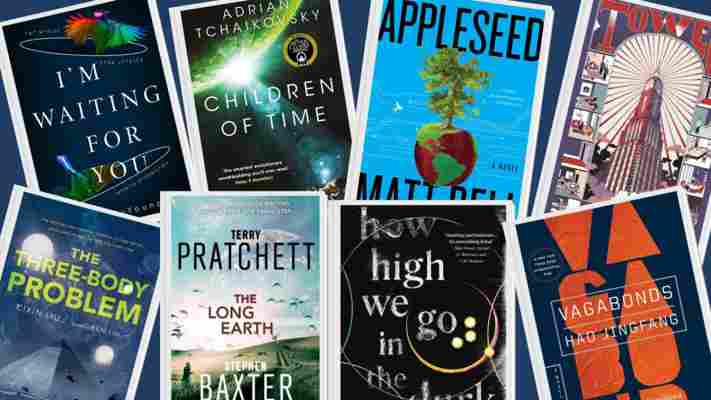
Authors are pushing boundaries, blending genres, revisiting classic themes with fresh eyes and perspectives.
There’s so much to be excited about when it comes to modern sci-fi novels.
Essential Modern Sci-fi Novels
Whether you’re an aficionado of classic science fiction and want to know what modern authors are all about, or you are new to the genre and want to start with the contemporary and work backwards, here’s what you need to be reading.
These authors from around the world are redefining the genre and writing some of the best modern sci-fi novels you can read right now.
Disclaimer: For a book to make this list of modern sci-fi novels, it has to have been published this century.
Read More: Essential Sci-fi Manga
Read More: Essential Sci-fi Books by Women
How High We Go in the Dark by Sequoia Nagamatsu
It’s not a stretch to call How High We Go in the Dark the next step in science fiction.
This is one of the best modern sci-fi novels you’ll ever read; a bold new approach to the genre of science fiction.
Reminiscent of the narratives and themes found in the works of Emily St. John Mandel, with a sprinkling of Black Mirror, Sequoia Nagamatsu’s debut novel is essential reading.
We begin with a scientist whose daughter, also a scientist, has recently and tragically died while on an expedition to the Batagaika Crater in Siberia.
Cliff heads to Siberia to continue his daughter’s work, with the support of her colleagues.
The work involves investigating the melting permafrost to see if any potentially long-frozen diseases might be uncovered and spread across the world.
This is a very real issue that scientists fear, and that is part of what makes How High We Go in the Dark so compelling and chilling.
And of course, a virus is uncovered and it does spread. From here, we follow a host of different first-person narratives in a world where infected children have their organs slowly mutated until they fail completely.
Multiple sci-fi themes and tropes are explored in new ways here, including the question of human intelligence when a pig that was being used to grow human organs develops advanced intelligence and even telepathic speech.
These disparate themes and narratives all work together so beautifully, like an orchestra of science fiction concepts. It’s beautiful and makes for a very addictive read.
Buy a copy here!
Children of Time by Adrian Tchaikovsky
British author Adrian Tchaikovsky first rose to prominence as a fantasy author, but it’s his debut sci-fi novel Children of Time that had readers sitting up and paying attention.
After its publication in 2015, it won the prestigious Arthur C. Clarke Award the following year, and very deservedly so.
We begin with a scientist who, along with a small team, adventured out to experiment with and terraform a distant planet for humans to colonise.
Things, however, went wrong, and this eventually leads to the dominant intelligent race on that planet being spiders instead of apes.
Fast-forward to a time when humanity’s last arc of survivors have abandoned Earth and are on their way to this new Earth, hoping to find a new home.
What’s so exciting about Children of Time is its wonderful world-building.
The spiders themselves are protagonists as well, and we get to see Tchaikovsky’s mind at work as he imagines what a society of advanced spiders with human-like intelligence might look like.
Then there’s how the arc of surviving humans operates and the problems that arise onboard.
This is a novel that leans on hard sci-fi, bringing us things that are potentially possible, or at least feasible, but also bursting with imagination and big themes to chew on.
Children of Time is near perfect; one of the most exquisite modern sci-fi novels you’ll ever read.
Buy a copy here!
Vagabonds by Hao Jingfang
Translated from the Chinese by Ken Liu
As things stand right now, Hao Jingfang’s Vagabonds feels like the defining sci-fi novel of the decade.
This is a grand, ambitious, considered, philosophical masterpiece of political science fiction, and one of the very best modern sci-fi novels.
Taking place in 2201, Vagabonds is set on Mars and focuses on the tensions between Mars and Earth. Similar to the timeline of the early USA, Mars was colonised (though unlike the US, it wasn’t already lived on and therefore nothing was stolen).
After its colonisation, Mars was dependent on Earth for supplies, but eventually wanted to strike out on its own and a war for independence ensued. After the war, Earth resembles the greatest extremes of capitalism and Mars is something of a communist utopia.
Forty years after the war, our protagonist, Luoying, is a young Martian woman who has returned to Mars after years of living and studying on Earth as part of the Mercury Group (a batch of young people sent over to learn and improve interplanetary relations).
The big question posed by Vagabonds concerns the meaning of freedom. Each planet views the inhabitants of the other with pity, seeing the other as less free.
Terrans are free to pursue different jobs, move cities and countries, and spend their money how they please. Martians are free from the stresses of money, poverty, corporate pressure, unemployment, and unfulfillment.
For their unique freedoms, both planets have their own drawbacks and restrictions. Feeling like she belongs to both cultures, Luoying is seeking answers to the question of what freedom really looks like.
Beyond all of this is the world-building. Hao Jingfang provides us with such a detailed and exciting version of Mars, mechanically, politically, and economically. It’s dense but endlessly fascinating.
While it is a long and slow book, Vagabonds is one to get lost in. A genius work of Chinese sci-fi and one of the best modern sci-fi novels.
Buy a copy here!
Appleseed by Matt Bell
The phenomenal Appleseed is a slow-burn eco-novel spanning multiple timelines and genres, and one of the most revolutionary modern sci-fi novels ever written.
Matt Bell expertly blends folklore with sci-fi and post-apocalyptic themes with an ending that ties three disparate narratives together in ways that you simply can’t predict.
We spend the majority of our time as readers in eighteenth-century Ohio, as two brothers follow the path of the legendary Johnny Appleseed, planting apple orchards across the US.
As the brothers pass through settlements and forests teeming with myth, their bond is tested over and over.
The second narrative is set fifty years from our present time, in the second half of the 21st Century, when climate change has ravaged the Earth.
Having invested early in genetic engineering and food science, one company now owns all the world’s resources. But a growing resistance is working to redistribute both land and power.
You follow one of the company’s original founders as he returns to the headquarters, intending to destroy what he helped build.
The final narrative is set thousand years in the future, when North America is covered by a massive sheet of ice. One lonely sentient being inhabits a tech station on top of the glacier.
You follow him as he sets out to follow a homing beacon across the continent in the hopes of discovering the last remnant of civilisation.
There are few novels as imaginative and beautifully plotted as Appleseed, a novel of important ideas that need to be paid attention to.
This is one of the best sci-fi novels on the shelves, especially for fans of the eco-novel subgenre.
Buy a copy here!
To Be Taught If Fortunate by Becky Chambers
To Be Taught If Fortunate is an original sci-fi novella by Becky Chambers. While her celebrated Wayfarer series is a space opera, this is a harder, quieter, more serious story.
This is one of the best modern sci-fi novels; set in a future where a new public space program has been kickstarted by the funding of ordinary people, with a specific view to exploring and discovering and expanding human understanding of the cosmos.
A crew of four people has been sent to a faraway solar system, in order to examine the planets and moons that are believed to harbour life.
To Be Taught If Fortunate is another novel that flexes the muscles of Becky Chambers’ imagination.
She repeatedly considers what might, reasonably, be found on certain worlds with certain climates.
This is not about imagined civilisations but about biodiversity and small discoveries, about the beauty of life and the magic of exploration.
This is a book that celebrates science and what it can achieve.
Easily one of the most impactful and comforting little sci-fi books by women that you’re likely to read in your life.
Buy a copy here!
Several People Are Typing by Calvin Kasulke
Several People Are Typing is a mind-bending, genre-bending novel presented entirely as a series of Slack messages.
This fantastic piece of comedy horror science fiction for the digital age that would make Franz Kafka proud.
Several People Are Typing begins with Gerald, a man who works in New York City, logging into his company Slack to inform his colleagues that he has been trapped in the app.
Upon learning that his consciousness (or possibly his entire self?) has been uploaded to Slack, his colleagues naturally don’t believe him and it becomes a tired prank to them very quickly.
But, with nothing to do but figure out how to get out, Gerald keeps working and his productivity gradually improves in a hilarious moment of kafkaesque black comedy.
Meanwhile, more creepy events occur with increasing frequency and drama, including the sound of howling outside one colleague’s window and signs that the Slack help bot may be gaining sentience.
What begins as a kafkaesque commentary on modern work culture slowly descends into a creeping sci-fi horror novel, all written like a Slack transcript. Brilliant.
Klara and the Sun by Kazuo Ishiguro
Written by one of the modern world’s finest and most beloved authors, Kazuo Ishiguro, Klara and the Sun is easily one of the finest modern sci-fi books of recent years.
This is a science fiction masterpiece that tells the story of Klara, an Artificial Friend (or AF). The purpose of an AF is to be a companion to the teenager who selects them.
Klara begins her story in a store in an unspecified American city. She is put on display and, through her eyes, we learn about the world — or, at least, the world as she sees it. Klara is soon chosen by a teenage girl called Josie who takes Klara home to live with her in the countryside.
This is a novel about love and hope. Klara’s relationship with Josie, and Josie’s relationship to her own mother Chrissie and her best friend Rick, is the glue of this book.
What makes this almost an elevation of Ishiguro’s unreliable narrator trope is Klara’s own unique perspective on the world (literally, how her robot eyes see things, and metaphorically, how she learns and comes to understand people and their relationships).
This is a very sweet and tender novel full of love in all its forms.
It considers class and social groups, but it also deals heavily with love, religion, superstition, and, most importantly, how we hope; how we use hope as a method of survival.
Alongside Never Let Me Go, Klara and the Sun proves that Ishiguro’s greatest strength is observing human relationships through a variety of lenses; and he is at his best when using science fiction as a tool for exploring that to its fullest.
Buy a copy here!
Tender is the Flesh by Agustina Bazterrica
Translated from the Spanish by Sarah Moses
Blurring the lines between sci-fi and dystopian fiction, Tender is the Flesh brings us something entirely new.
Living in a world that is either a little to the future of, or a possible parallel to, our own, our protagonist Tejo works at a slaughterhouse which deals exclusively in human meat.
A disease is said to have tainted, and mostly wiped out, most non-human animals, and so came a period known as the Transition, wherein human meat production became an accepted norm across the world.
The humans that are bred for slaughter are not considered people, are referred to as ‘heads’, and are kept in much the same condition as cattle are today.
Therein lies the book’s first clear-cut message: to consider how modern-day battery farming, and meat and dairy production, treats non-human animals: the conditions they’re kept in; the ways they are raised, tortured, abused, and ultimately killed.
If this were the only message the book carried, it wouldn’t be adding anything new to the popular discourse. Fortunately, Tender is the Flesh offers a broader scope than that.
While Tender is the Flesh treads dangerously close to being gratuitous and unnecessarily violent at times, and its exposition never ceases to feel disconnected from the plot.
The questions and warnings it raises are ones genuinely worth sitting with and pondering on as our planet continues to diminish in a frightening multitude of ways.
Tejo’s personal story is also aggressively compelling, and it carries the book’s messages and morals expertly. It is, ultimately, those messages that make this book worth reading, and what makes it one of the best modern sci-fi novels.
Buy a copy here!
The Long Earth by Terry Pratchett and Stephen Baxter
What do you get when you cross the political wisdom and boundless imagination of Terry Pratchett with the knowledge and experience of Stephen Baxter?
One of the most essential modern sci-fi novels on the shelves, that’s what.
One of the simplest pleasures that good sci-fi novels can provide is eliciting that “wow” feeling when confronted with a big idea or event.
The Long Earth is full of these moments:
When you follow protagonist Joshua to his first parallel world
When you learnt that there are no people on any other world
When you learn that they are potentially infinite
When you learn of a strange human-like race of natural “steppers” that move between parallel worlds
When you learnt that a catastrophe is wiping out these worlds
There’s a healthy helping of surrealism here, as well as a big dollop of political intrigue. But there is also that blissful sense of wide-eyed discovery and adventure.
The Long Earth is a novel in which scary and dangerous ideas coalesce with the human urge for adventure, discovery, and doing something risky for the sake of it.
While it lacks the wit of Pratchett’s Discworld series, it makes up for that with a mind-opening feeling of discovery and intrigue.
Buy a copy here!
The Employees by Olga Ravn
Translated from the Danish by Martin Aitken
Shortlisted for the International Booker Prize 2021, The Employees is a short sci-fi novel by Danish author Olga Ravn.
Set on a massive spaceship in the 22nd Century, this is a satire of hypercapitalist workplace culture. It is one of the very best modern sci-fi novels.
The Employees is structured as a series of interview statements with various workers about a ship which has just picked up a collection of unknown objects from a newly discovered planet.
The objects are slowly and subtly changing the minds and feelings of the workers, both human and humanoid (robot AI).
And the company is observing these changes through a series of interviews with both groups.
This Danish sci-fi novel explores the theme of AI and the meaning of life in truly fresh and original ways. It also satirises the cold and uncaring relationship between a company and its workforce.
The company sits silent and invisible as its human employees grow increasingly nostalgic about life on Earth, while its robot employees feel lost, wistful, and even angry as they too become nostalgic, but for what?
The concept of AI and the ethics behind it are considered from new angles, such as when one humanoid observes that it has been programmed to behave faithfully, but all it sees are hypocritical and unfaithful humans all around it.
The Employees is one of the most original and unique science fiction novels to come along in years, and an absolute must-read amongst sci-fi books by women authors.
Buy a copy here!
Tower by Bae Myung-hoon
Translated from the Korean by Sung Ryu
Tower is a truly unique and boundary-pushing piece of modern science fiction.
As its name implies, this piece of Korean sci-fi is set entirely in an enormous tower. This titular tower is a nation unto itself, home to 500,000 people.
Bae implies that it was built on Korean soil but this is never explicitly stated.
The book is divided into a series of interconnected speculative tales, all set within this solitary tower nation known as Beanstalk.
The world-building is fantastic, as the tower needs to be a believable place in order for the author’s disparate tales to work. Infrastructure, economy, politics, and daily life all need to be accounted for and designed in a way that the reader can understand and appreciate.
The six stories in Tower are tied together by the place itself and by recurring characters and events. And each story serves to further build the world while also telling an entirely self-contained tale.
In that sense, this is a unique piece of Korean fiction that blends the concepts of the novel and the short story collection.
And each tale also, as all good science fiction does, poses an ethical, political, or philosophical quandary for us to muse over.
What an amazing book amongst the best modern sci-fi novels.
Buy a copy here!
The Echo Wife by Sarah Gailey
The Echo Wife is a grounded piece of speculative science fiction. A deeply personal and human tale of love and loss and betrayal and desperation and death.
Our protagonist, Evelyn, is a research biologist who has seen breakthroughs in the field of human cloning. Her ex-husband, a fellow biologist named Nathan, has recently remarried.
After receiving an award for her work, Evelyn is asked out to tea by Nathan’s new partner, Martine, who turns out to be a clone of Evelyn, grown by Nathan.
Martine also happens to be pregnant, which is something that Evelyn, the leading expert in cloning, believes to be impossible.
To say more would be to spoil a novel full of twists and turns. This is an intimate science fiction thriller, a true page-turner.
What makes this novel so crisp and tight, however, is Evelyn herself. Written as a true scientist, she is clinical and logical in her view of people. She is kind and helpful, but not warm and passionate.
The world of The Echo Wife is also wonderfully well-realised. While perhaps not hard sci-fi, it is grounded enough to feel believable — or, at least, conceivably.
Tightly plotted, elegantly written, and populated with sharp, unique characters, The Echo Wife is a modern masterpiece of speculative science fiction that explores big moral and ethical questions, as all good speculative sci-fi should.
Buy a copy here!
I’m Waiting for You by Kim Bo-young
Translated from the Korean by Sung Ryu and Sophie Bowman
Kim Bo-Young is a legend of Korean literature, and even worked as a script editor on Oscar-winning director Bong Joon-Ho’s Snowpiercer.
With I’m Waiting for You, readers can see first-hand why she’s such a special sci-fi author. This collection of four stories is essential reading amongst modern sci-fi novels.
The four stories in this collection actually work as two pairs. The first and fourth stories — I’m Waiting For You and On My Way to You — are the same tale told from two perspectives: a bride and groom each making their way home to Earth for their wedding ceremony.
The second and third stories — The Prophet of Corruption and That One Life — which are also the longest and shortest tales respectively, are a blend of religion, mysticism, and science fiction.
In these two middle tales, the characters are a set of gods, and it is quickly revealed that they created Earth as a school in which they themselves can learn and grow.
The main protagonist of The Prophet of Corruption, Naban, is a single god whose prophets, disciples, and children all separated from them like cells.
Individually, they spend entire lifetimes on Earth, learning and experiencing and dying.
Naban believes in asceticism as a school of learning; their children are reborn in low roles; they suffer and toil and eventually return home. But some are rebelling against this approach to living and learning.
What makes these stories so tantalisingly addictive is both Kim’s world-building and also her attempt at writing gods as characters, with motivations and behaviours different from our own.
The stories that bookend this collection are each written in an epistolary fashion, as letters to the other. In I’m Waiting For You, our nameless groom is trying to make it to Earth, and is updating his bride each time something goes awry (and a lot goes awry).
The same is true in On My Way to You, only here the bride has her own hurdles to get over. These two stories are heartbreaking.
You’ll root for them, cry for them, hope against hope that things will work out for them.
Buy a copy here!
The Three-Body Problem by Liu Cixin
Translated from the Chinese by Ken Liu
The Three-Body Problem poses questions that are familiar in science fiction:
Can science be a path to truth?
Do humans deserve to occupy a planet – essentially a rotating Eden in a barren universe – that they are needlessly destroying?
What would it take for a single person to betray the entire human race?
The questions are familiar, but the execution is a page-turning, uniquely Chinese epic, and one of the best modern sci-fi novels out there.
The Three-Body Problem is the first Chinese science fiction novel translated into English for western audiences.
The author, Cixin Liu, is an engineer who moonlighted as a writer for more than three decades while working at a power plant in China’s Shanxi Province.
Liu’s knowledge of science and engineering permeates The Three-Body Problem, which is bursting with detailed explanations of astronomy and abstract physics — challenging, but illuminating passages that are well-worth the effort of reading.
It is, without a doubt, one of the most mind-bending, contemplative and inspiring pieces of fiction you’ll ever read.
The Three-Body Problem, appropriately, contains three intertwining plots: The first, in the early 1970s during China’s Cultural Revolution; the second, in the early 2000s; and a third set inside of a virtual reality game centred in an extraterrestrial world terrorised by its three-sun system.
The protagonist of the early 2000s plot is Wang Miao, a well-to-do nanomaterials scientist who teams up with the loud-talking, chain-smoking police officer Shi Qiang to investigate the mysterious deaths of local scientists, premeditated events that they will discover are inextricably linked to the tragedies of the Cultural Revolution.
This is a revolution of science fiction and one of the most essential modern sci-fi novels on the shelves.
Buy a copy here!
The Space Between Worlds by Micaiah Johnson
The Space Between Worlds is the debut novel by author Micaiah Johnson; a multiverse-spanning journey of mystery and discovery, and one of the most original and affecting modern sci-fi novels on the shelves.
Our protagonist is Cara, a young traverser who moves through 380 different versions of Earth in order to observe and gather data.
Her job is simply to report on what makes each version of Earth unique.
What makes this premise fun is that a traverser can only set foot on an Earth if that Earth’s version of them is dead, and Cara is dead in all but eight Earths, due to the difficult circumstances of her birth and youth.
Despite its impressive and ambitious world-building, The Space Between Worlds is actually a rather intimate character-focussed sci-fi novel.
Through this sci-fi novel, Johnson offers us both questions and answers on the themes of identity, nature vs nurture, and the lasting impact of trauma. She gives us satisfying character writing, powerful plot twists, and some nice genre-bending.
Cara herself is the driving force of this novel. A damaged, angry young woman with too much on her shoulders.
She is relatable in a tragic kind of way, and someone to watch with unblinking eyes as her journey of discovery becomes more personal than professional.
Buy a copy here!
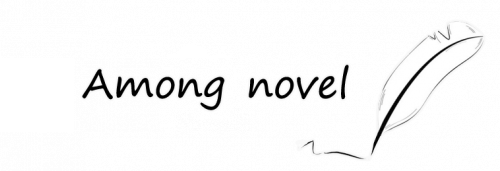
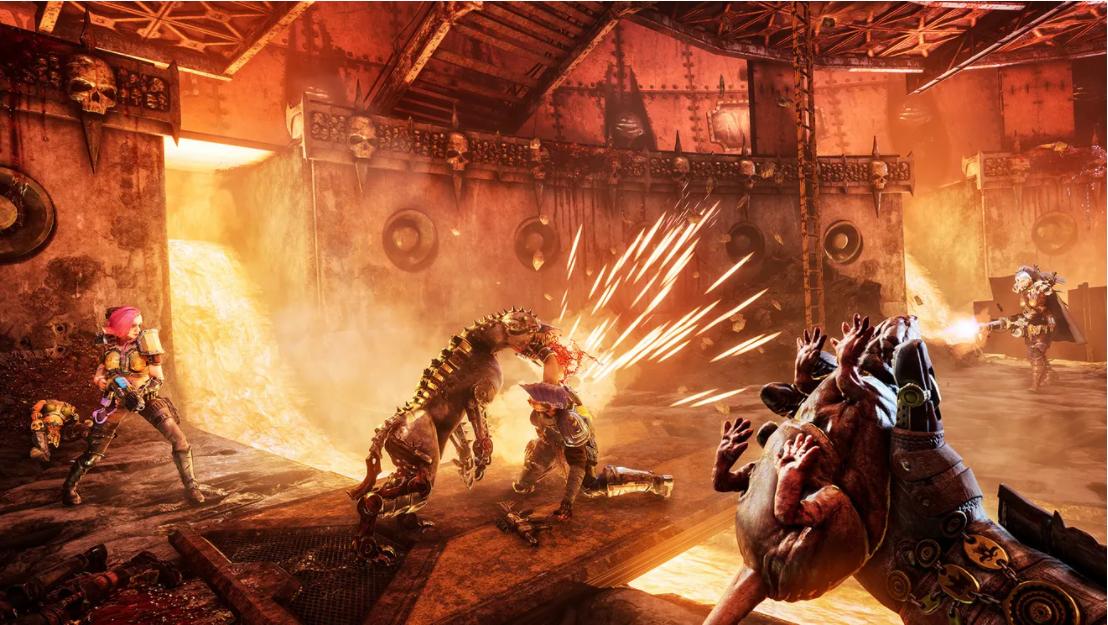
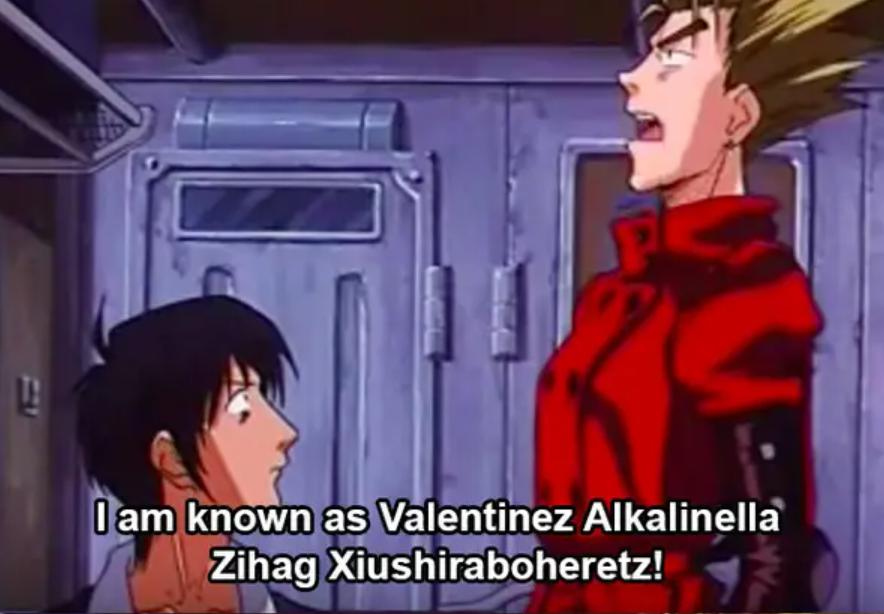
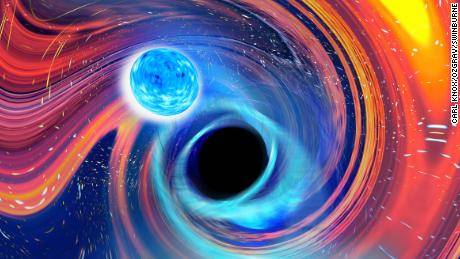


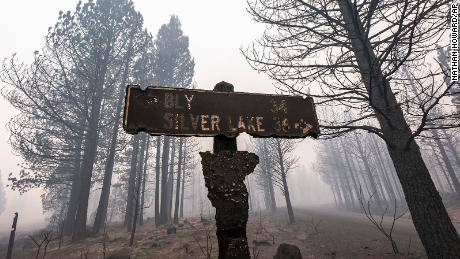


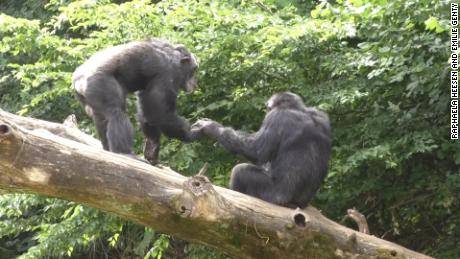

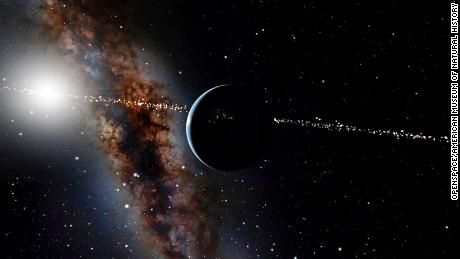
Write a Comment